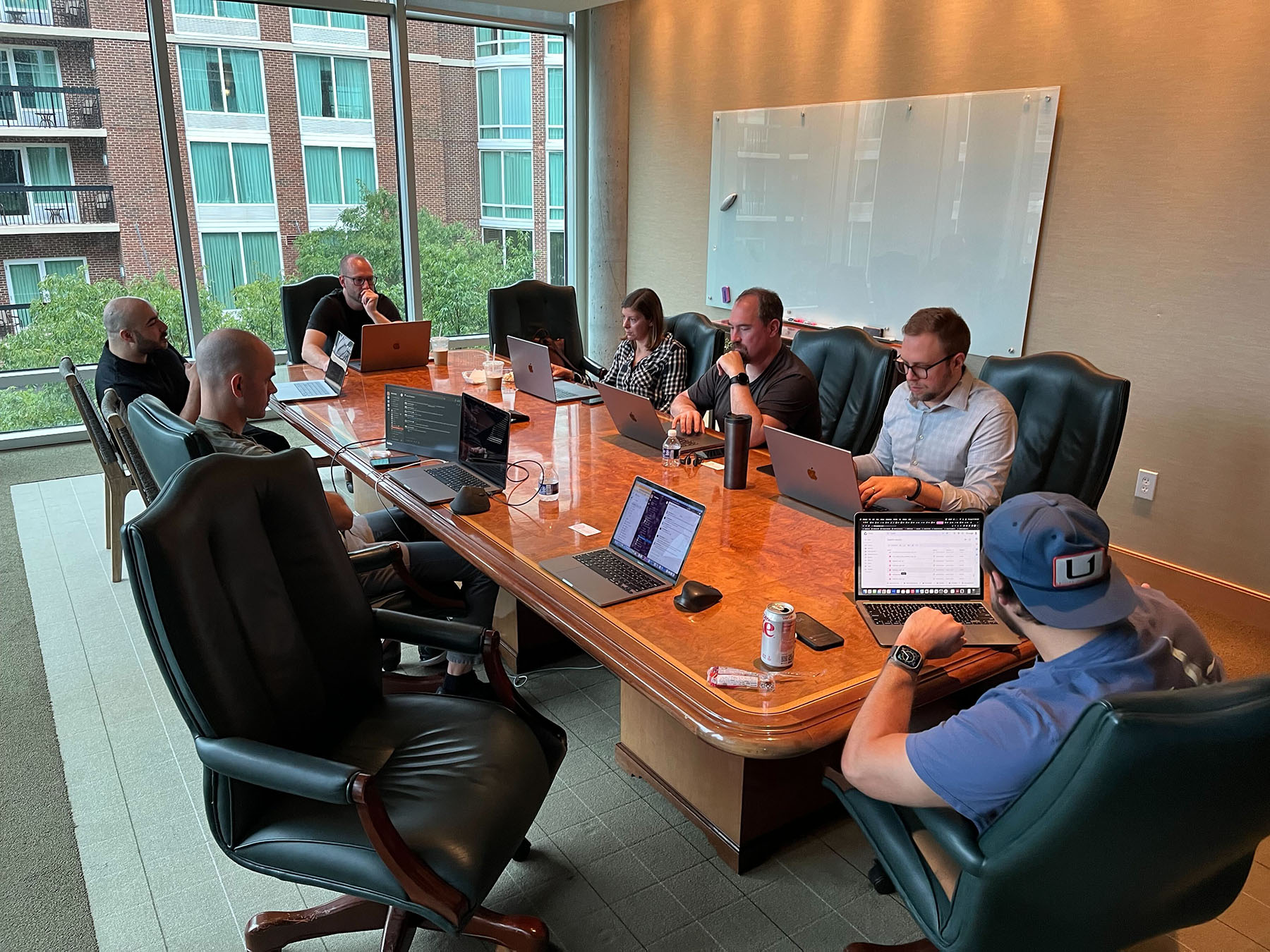Overcoming Healthcare System Integration Challenges
How do we confront healthcare system integration challenges to foster innovation and efficiency?
Let’s consider the potential. By embracing technological advancements with open arms, we embark on a journey, replete with opportunities for transformative healthcare outcomes. So, let’s push boundaries boldly toward a new frontier, where integrated systems not only improve patient care but also enable seamless provider collaboration, creating a nexus of modern unified healthcare solutions.
Mapping the Integration Landscape
Analyzing the integration terrain yields substantial insights.
In embarking upon the ambitious journey of healthcare system integration, a comprehensive understanding of the existing landscape is paramount. This crucial phase not only highlights the varied complexities of intertwining diverse systems but also serves as a beacon guiding the direction of innovative solutions. Consequently, dedicating time to this analysis can significantly streamline subsequent phases, aligning strategic visions with technological capabilities.
Integration demands clarity and navigational precision.
Mapping this landscape involves recognizing key components – like the core elements that form the backbone of any integration – to ensure smooth interoperability and cross-platform efficacy. This insightful groundwork is instrumental in foreseeing obstacles and envisioning adaptable strategies that cultivate enduring partnerships.
Through mapping, stakeholders can anticipate interconnections between technological ecosystems, positioning themselves not just for the foreseeable future but for a trajectory that embraces 2023’s healthcare innovations and beyond. This foresight catalyzes strategic agility and empowers key players to build robust pathways toward successful integration amidst complex challenges.
Identifying Common Integration Challenges
In the healthcare sector, integration challenges often arise due to disparate systems that lack compatibility. As systems multiply, so do the intricacies associated with merging them into a seamless whole.
In 2016, industry experts, in a report addressing integration, observed that interoperability was among the top challenges stakeholders faced. The healthcare industry’s rapid technological evolution often widens the gap between existing systems and emerging innovations, complicating integration efforts.
Moreover, it’s not just about technology; human factors play an equally crucial role. Ensuring the alignment of organizational cultures and workforce adaptability is essential for the successful implementation and efficient use of integrated systems. These barriers, while formidable, are surmountable with focused leadership and clear communication strategies.
Addressing these challenges head-on, leaders can gain insights from both past endeavors and current innovations. Fostering collaboration and investing in cross-disciplinary teams can mitigate integration hurdles, enabling a more cohesive transformation into a united healthcare system landscape.
Resolving these challenges promises a more connected and efficient healthcare experience for all stakeholders involved.
Analyzing Data Silos
Data silos persist as significant obstacles, a remnant of compartmentalized approaches, allowing information gaps to widen. These silos challenge the seamless sharing of critical health data, creating barriers to a holistic patient care ecosystem that thrives on interconnected insights.
In addressing the complexities of a data silo, investment in “interoperable solutions” becomes vital. This is not just a matter of technology but necessitates a shift in organizational mindset. As such, the elimination of the silos paves the way for transformative healthcare delivery, offering enhanced collaborative opportunities that leverage the full spectrum of available data.
Strategies to Eliminate Data Silos
Bridging data silos is essential—fostering synergy among stakeholders to enable uninterrupted data flow and enhanced healthcare outcomes.
Approximately 80% of healthcare data remains unstructured, waiting to be unleashed for improved insights.
Organizations can leverage advanced integration platforms, which allow various systems to communicate harmoniously. Implementing standardized protocols ensures data is consistently formatted, facilitating smoother transitions and fostering a collaborative healthcare ecosystem.
Empowering teams with comprehensive training and robust governance structures can transform data management. By nurturing a culture of transparency and open access, healthcare entities unlock unprecedented potentials, enlightening paths to innovative patient care solutions.
Standardizing Data Formats
Standardizing data formats is pivotal in addressing healthcare system integration challenges, vital for seamless patient care, and leveraging data’s potential.
In this endeavor, healthcare institutions must adopt universal data exchange standards (e.g., HL7 FHIR) to facilitate the synchronized management of patient records, thus ensuring portability and consistency across platforms and systems. This alignment is foundational to providing timely insights and informed decision-making.
Terms like “interoperability” and “compatibility” now encapsulate visions of the ‘future healthcare ecosystem’.
Importance of Interoperability
Interoperability is the cornerstone of modern healthcare.
The ability to seamlessly exchange and interpret information across diverse systems is a game-changer. It empowers healthcare providers to deliver high-quality, coordinated care efficiently, reducing errors and improving outcomes. Critically, interoperability ensures that the right information is available at the right time, fostering more precise, patient-centered healthcare.
Patients benefit from improved care timelines.
Healthcare data integration is essential – not only for addressing current healthcare system integration challenges but also for setting the groundwork for future-ready, tech-driven healthcare landscapes.
Our relentless commitment to advancing interoperability shall illuminate pathways towards pioneering healthcare transformations, ultimately paving the way for a robust 2023 and beyond. By dismantling silos and promoting seamless communication, we can craft a healthcare ecosystem where every bit of data is harnessed to its fullest potential, revolutionizing patient experiences across the board.
Ensuring Data Security
Navigating data security challenges is paramount in healthcare system integration, a beacon of transformative potential, where trust must reign. Safeguarding sensitive health information involves robust encryption, delivering assurance that patient data remains confidential, thus enhancing the digital trust necessary for progress.
As technology shapes pathways to a new era, we champion the “privacy by design” approach. This is not merely a tenet but a fundamental ethos, fortifying every technological advancement. In our quest, the intersection of innovation and security is our North Star, ensuring that the advancement of healthcare information technology proceeds with precision and protection hand in hand.
Overcoming Security Obstacles
Addressing security obstacles in healthcare system integration requires unwavering dedication and innovative strategies that blend cutting-edge technologies with proven practices for lasting change.
Innovative solutions now include advanced encryption methods that evolve with emerging threats.
Ensuring robust protection of patient data means anticipating cybersecurity threats and implementing a robust suite of countermeasures that include advanced authentication, rigorous access controls, and constant system monitoring. This multilayered defense not only mitigates risks but also instills confidence among stakeholders, driving forward digital transformation.
By investing in continuous education and fostering a culture of cybersecurity awareness, we nurture an environment where proactive defenses are second nature. It is a paradigm where “security” is synonymous with sustainable healthcare integration, paving the way for a resilient, patient-centered future.
Integrating Legacy Systems
Navigating the intricate maze of integrating legacy systems within modern healthcare infrastructure is a delicate balance of innovation, persistence, and forward-thinking. These age-old systems, while robust, pose challenges in data accessibility and adaptability, yet they continue to be integral due to their established reliability and cost considerations.
Catalyzing transformative change involves bridging these systems with state-of-the-art solutions, ensuring interoperability across platforms.
Modernizing Legacy Infrastructure
Revolutionizing legacy infrastructure is crucial for addressing healthcare system integration challenges with the vigor and precision they require.
Historically, healthcare systems relied on stable but rigid architectures, making adaptation to new technologies a daunting task. However, advancements in integration tools provide opportunities to overcome these hurdles and harness new efficiencies.
Today, a strategic roadmap is essential, inviting innovative methodologies to seamlessly transition from legacy systems to agile and interoperable infrastructures. This forward-thinking approach facilitates real-time data sharing and enhanced patient care.
Empowering healthcare organizations through robust change management strategies ensures that modernization efforts align with overarching institutional objectives and stakeholder expectations. Embracing this evolution promotes a resilient technological environment.
Efficiently modernized infrastructures elevate patient outcomes and redefine what’s possible within the healthcare landscape.
Facilitating Real-Time Data Exchange
In the realm of healthcare, information is power.
The capacity to facilitate real-time data exchange promises unprecedented advantages. This critical ability need not be seen as an insurmountable challenge, but rather as a thrilling opportunity to revolutionize patient care. Significantly, these exchanges can transform healthcare analytics, enabling swift decision-making based on comprehensive, up-to-the-minute data.
Data integrity is paramount when integrating these systems.
The goal here is to ensure seamless data flow – not just within single organizations but also among various interconnected entities in the healthcare ecosystem – to provide synchronous healthcare solutions.
Real-time data exchange exemplifies the technological pinnacle that enriches collaboration across healthcare providers, reducing lags and improving decision-making. Thanks to catalytic innovations in 2023, healthcare organizations that embrace these integrations are setting new standards. These endeavors inspire a future where data-driven insights deliver consistently high-quality patient experiences.
Addressing User Adoption Barriers
Effectively addressing user adoption barriers within healthcare system integration challenges requires a nuanced understanding of both technical and human dynamics, as they each play pivotal roles in success.
Encouraging and supporting healthcare professionals in embracing new technologies can significantly alleviate such barriers.
This can be achieved through comprehensive training programs tailored to diverse skill levels, cultivating a culture of innovation where technology acts as a partner rather than an obstacle, uplifting team morale, enthusiasm, and confidence in new systems.
Moreover, engagement with end-users during the design and implementation phases can build a sense of ownership and trust. By involving staff, from clinicians to administrative personnel, in shaping these technological shifts, organizations not only enhance user satisfaction and efficacy but also underscore an inclusive approach to transformative change that is undoubtedly critical in healthcare.
Leveraging Emerging Technologies
Innovative tools such as artificial intelligence, a bedrock of contemporary advancements, promise great potential. These technologies hold the key to revolutionizing healthcare system integration challenges by offering unprecedented precision, streamlining processes, and enhancing patient outcomes in ways we are only beginning to explore.
By embracing the capabilities offered by the Internet of Things (IoT), healthcare institutions can create a “smart ecosystem.” This web of interconnected devices simplifies data exchange and ensures better synchronization of critical information. As a result, the integration of such groundbreaking innovations serves to bridge the gap between disparate healthcare systems, paving the way for a seamless and efficient healthcare delivery model.
Role of AI and Machine Learning
Artificial intelligence and machine learning are revolutionizing the landscape of healthcare system integration challenges today.
In 2023, AI-driven solutions have emerged as transformative tools, significantly enhancing real-time data analytics. They empower healthcare providers to diagnose with greater accuracy, increasing efficiency and patient satisfaction.
Moreover, AI’s potential to predict patient outcomes and streamline administrative processes cannot be understated. This leads to reduced operational costs and elevates the quality of care.
By automating routine tasks, machine learning allows healthcare professionals to focus on more critical tasks, ensuring improved patient engagement. It’s here we witness AI’s promise unfurling.
Embracing AI and machine learning could be the key to overcoming healthcare system integration challenges entirely.
Evaluating Integration Success
Evaluating integration success within the healthcare landscape requires a multidimensional approach that blends technology and human expertise, ensuring that new systems meet key performance metrics.
Stakeholders must define clear benchmarks against which progress can be measured.
Such metrics for evaluation could include improved interoperability between systems, reduction in administrative burdens, a decrease in manual errors, and enhancements in data-driven decision-making capacity and patient care outcomes.
The process involves continuous feedback loops to assess the effectiveness of integration efforts in real time, allowing adjustments based on emerging needs and technologies. This dynamic approach transforms “challenges” into opportunities for innovation and excellence, ensuring that integration efforts deliver meaningful improvements.
Cost Management in Integration Projects
Effective cost management is paramount.
In the realm of healthcare system integration, conscientious financial planning is essential. The intricate nature of these projects demands a keen eye on the allocation of resources, ensuring that costs do not spiral out of control. Consequently, striking a balance between investment in cutting-edge technologies and adherence to budgeting constraints can drive successful outcomes.
Budgetary discipline can minimize unforeseen expenses.
Prudent allocation of funds should be complemented by – at the very least – reserve contingencies for unexpected shortfalls or strategic pivots. In doing so, healthcare organizations maintain robust agility, poised to capitalize on growth opportunities.
A deliberate focus on scalable solutions can enhance project viability by ensuring long-term cost-effectiveness. Leveraging shared service models and cloud-based platforms often lead to significant savings, driving efficiency and optimizing return on integration investments. With strategic oversight, financial stewardship becomes a catalyst for transformative healthcare integration, guiding the industry towards a visionary future.
Ready to explore the possibilities of a next-generation software upgrade? Let’s uncover what a custom upgrade project could look like for your organization. Schedule time with our team to discuss how tailored solutions can drive innovation, efficiency, and growth for your business. Connect with us HERE.





